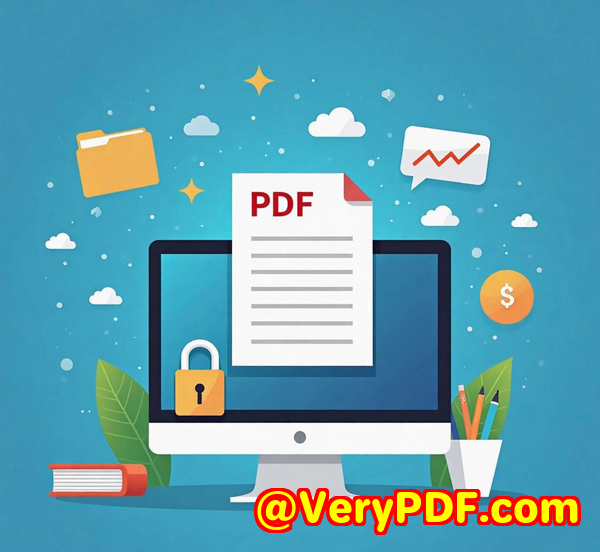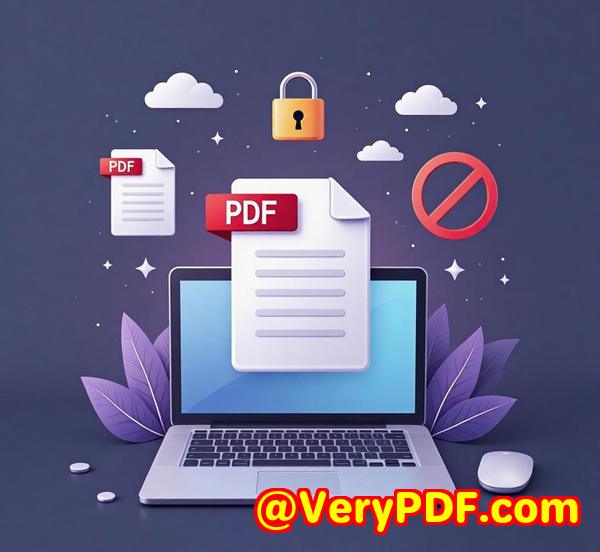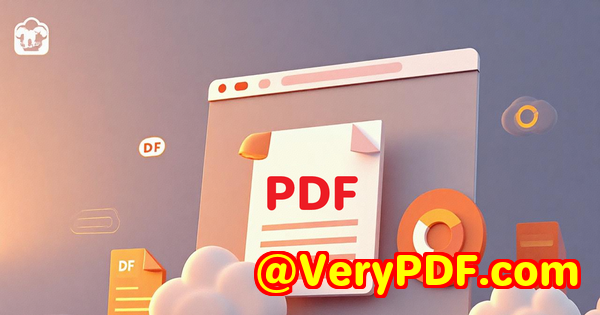Quickly Detect Color Pages in Multi-Language PS Files with SPLParser CLI Utility
Quickly Detect Color Pages in Multi-Language PS Files with SPLParser CLI Utility
Ever spent hours sifting through heaps of print spool files just to find out which pages are in color and which aren't? I've been there, stuck with endless PostScript (PS), PCL, and PDF files in multiple languages, trying to spot color pages for a big printing job. It's tedious, time-consuming, and frankly, a total drain on productivity. Figuring out color usage page-by-page isn't as straightforward as it sounds especially when you're juggling different file types and formats.

That's when I discovered the VeryPDF SPLParser Command Line tool. This utility quickly became my go-to for analysing print spool files, particularly when I needed to detect color pages fast and accurately across multi-language PS and PCL files. It's a command-line and SDK tool that feels like the Swiss army knife for anyone dealing with PCL, PS, and PDF print files. If you're in printing, IT, or document management, this tool's about to make your life easier.
What Exactly is VeryPDF SPLParser?
VeryPDF SPLParser is a command line utility designed to parse and analyse PDF, PS, PCL, and SPL print spool files. It doesn't just read these files it gives you detailed insights about every page, including color info, paper size, image size, and even allows modification of print properties such as job name, duplex setting, copies, and resolution.
Built for developers and IT pros, SPLParser lets you extract crucial info or convert pages to images, all via simple command line calls. No complicated GUIs or heavy software. Just precise, fast, reliable command line power.
Who's This Tool For?
-
Print shop operators managing high-volume print jobs and needing to separate color pages to optimise costs.
-
IT administrators working with print servers and wanting to automate print spool file analysis or modification.
-
Developers integrating print file parsing and editing into larger workflow systems.
-
Quality assurance teams in manufacturing or document production who need exact print job data quickly.
-
Anyone handling multi-language PostScript and PCL files where standard tools fall short.
How I Used SPLParser to Spot Color Pages Instantly
Before SPLParser, my team spent days manually opening print files to check page colors, mostly relying on visual checks or clunky software that wasn't made for this kind of work. It felt like trying to find a needle in a haystack.
Using SPLParser changed the game:
-
First, I ran the
-infocommand on a large PS file that had over 500 pages, many in different languages. The tool gave me a page-by-page breakdown with colour status, like this:Processing page 112 of 527...
[ColorInfo] Page 112 is [Color] -
This output made it simple to pinpoint exactly which pages needed colour printing without wasting resources on monochrome pages.
-
I could even specify to convert only the first page to a PNG image for quick previews using
-firstpage 1 -lastpage 1. That saved tons of time when verifying files before sending jobs to the printer. -
Because SPLParser supports multiple print languages like PS, PCL5, and PCL-XL, I wasn't limited to just one format. That flexibility was huge since our clients often sent jobs in different formats.
-
Modifying print job properties became just as effortless. For instance, I updated the duplex setting and number of copies directly on PCL and PS files with a single command line call.
This combo of detection, conversion, and editing makes SPLParser incredibly versatile.
Key Features That Stood Out
-
Page-by-Page Color Analysis: You get precise colour info for every page, which is crucial for cost control in printing.
-
Multi-format Support: Handles PS, PCL (PCL5, PCL-XL), PDF, and SPL files with no hiccups.
-
Page Conversion to PNG: Need a fast preview? Convert just the first page or a range to image files without processing the whole document.
-
Print Property Updates: Easily modify job name, duplex mode, copies, and resolution on PCL/PS files without reprinting or complex software.
-
Command-Line Simplicity: Integrates smoothly into scripts and automated workflows. No GUI distractions, just fast CLI commands.
Why I Prefer SPLParser Over Other Tools
I tried several print file analyzers before, but many either lacked multi-language support or forced me into clunky GUIs that slowed me down. Some were great for PDF but faltered with PCL or PS files, especially multi-language ones.
What made SPLParser a winner:
-
Royalty-Free Command Line: No per-use fees or licensing headaches.
-
Fast Processing: It doesn't hang on large files; handles thousands of pages smoothly.
-
Real-Time Feedback: Debug output and info options let me track what's happening during parsing.
-
Flexible and Script-Friendly: I could easily build batch scripts that processed files automatically a massive time-saver.
-
Accurate Color Detection: It's surprisingly good at telling color from mono, even on complex PS files with mixed content.
Real-World Scenarios Where SPLParser Shines
-
Print Job Cost Optimisation: Spot color pages to charge clients correctly or send only necessary color pages to the color printer.
-
Pre-Print QA: Convert first pages quickly to images for fast previews and quality checks.
-
Automated Print Server Workflows: Integrate color page detection and print property updates into your print queue handling scripts.
-
Document Archiving: Extract print job metadata and color info for audit trails or compliance.
-
Multi-Language Support: Perfect for global companies receiving print jobs in different languages and formats.
Getting Started with SPLParser: Simple Commands
Here are some practical commands I used to make my job easier:
-
To extract info and color analysis from a PS file:
splparser.exe -info D:\in.ps -
To convert just the first page of a PCL file to PNG at 300 DPI:
splparser.exe -firstpage 1 -lastpage 1 -dpi 300 D:\in.pcl D:\out.png -
To update duplex mode and copies in a PS file:
splparser.exe -update -jobname "SPLParserTest" -duplex 1 -copies 10 -resolution 1200 D:\in.ps D:\out.ps
Why I'd Recommend VeryPDF SPLParser
If you're drowning in a sea of print spool files and need a reliable, no-nonsense way to quickly detect color pages especially in multi-language PS and PCL files SPLParser is worth a serious look.
It's saved me hours of tedious work, prevented costly printing mistakes, and helped automate parts of our workflow that were impossible to handle manually.
I'd highly recommend this tool to anyone managing complex print jobs or needing deep insight into their PS, PCL, or PDF files.
Try it yourself and see how it simplifies your print file processing: https://www.verypdf.com/
Custom Development Services by VeryPDF
VeryPDF understands that every business has unique print and document processing needs. Beyond their off-the-shelf SPLParser Command Line tool, they offer comprehensive custom development services across various platforms including Linux, macOS, Windows, and server environments.
Their expertise covers programming languages and frameworks like Python, PHP, C/C++, Windows API, Linux, Mac, iOS, Android, JavaScript, C#, .NET, and HTML5.
They specialise in creating Windows Virtual Printer Drivers that generate PDFs, EMFs, and image formats, and tools to capture and monitor print jobs from any Windows printer supporting formats like PDF, EMF, PCL, Postscript, TIFF, and JPG.
VeryPDF can also provide advanced solutions involving system-wide or application-specific hooks to monitor and intercept Windows APIs, including file access.
If you require custom features such as enhanced barcode recognition, OCR for scanned documents, document form generation, digital signature integration, or advanced PDF security, VeryPDF is ready to collaborate.
Reach out via their support centre at https://support.verypdf.com/ to discuss your specific project requirements.
FAQs
Q1: Can SPLParser detect color pages in both PCL and PostScript files?
Yes, SPLParser performs page-by-page color analysis across PCL (including PCL5 and PCL-XL) and PostScript files reliably.
Q2: Does SPLParser allow modifying print job properties?
Absolutely. You can update duplex mode, number of copies, job name, and resolution on PCL and PS spool files directly through command line.
Q3: Is SPLParser suitable for multi-language print files?
Yes. It supports files in multiple languages and formats, making it ideal for global operations handling diverse print jobs.
Q4: Can I convert only specific pages to images?
Yes, SPLParser lets you convert specific pages (like the first page) to PNG images for quick previews.
Q5: Is this tool royalty-free for developers?
VeryPDF SPLParser is available as royalty-free software, making it great for integration into your applications or workflows without ongoing fees.
Tags
-
print spool file parser
-
color page detection PS files
-
PCL PostScript file analysis
-
print job automation tool
-
SPLParser command line utility
If you manage printing workflows or need to analyse PS, PCL, or PDF spool files, VeryPDF SPLParser Command Line is a tool that will save you time, reduce errors, and boost your productivity. Don't waste another minute guessing which pages use color let SPLParser do the heavy lifting.



